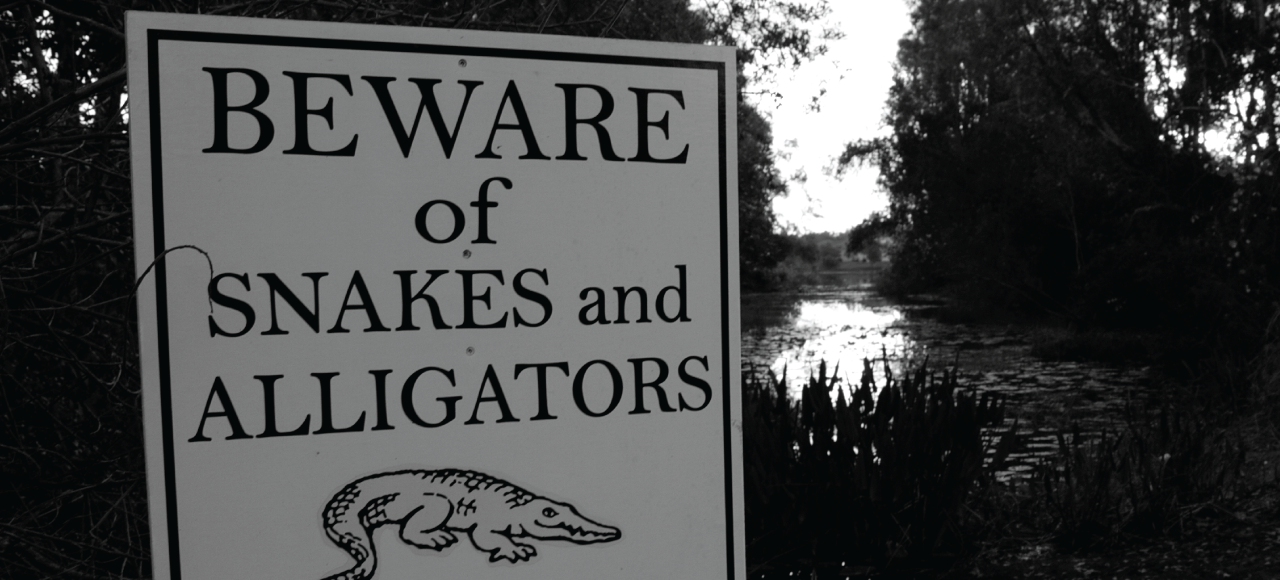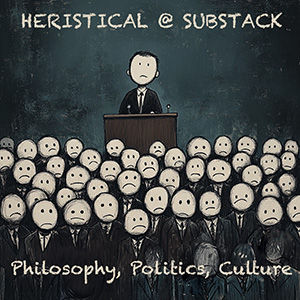
There has been lots of talk about so-called “trigger warnings” lately. Although they originated outside the university (largely on feminist message boards in the ‘90s, and then in the blogosphere [1]), within the academy this is the idea that professors should issue warnings to their students about potentially disturbing material that they are about to read or otherwise be exposed to. The warnings are necessary, advocates say, because such material may “trigger” episodes of discomfort, emotional pain, or outright post-traumatic stress disorder (PTSD).
This is clearly a crucial issue for a teacher such as myself, who is responsible for contributing to the education of scores of students every semester, and who is of course also concerned about their welfare and their thriving as human beings. So I read a lot, and widely (meaning both pro and con), about the issue, and have talked to colleagues and a number of students, in order to make up my mind not just in a theoretical sense, but also as guidance to my own actual practice in the classroom.
One of the most recent episodes concerning the controversy over trigger warnings (henceforth, TW) featured four Columbia University students belonging to the local Multicultural Affairs Advisory Board, who wrote a letter to the Columbia Spectator [2] arguing that exposure to the writings of the classic Roman poet Ovid should have come with TW because they contain references to rape. Referring to the experience of another student in a Literature Humanities course, the letter reads, in part:
During the week spent on Ovid’s “Metamorphoses,” the class was instructed to read the myths of Persephone and Daphne, both of which include vivid depictions of rape and sexual assault. As a survivor of sexual assault, the student described being triggered while reading such detailed accounts of rape throughout the work. However, the student said her professor focused on the beauty of the language and the splendor of the imagery when lecturing on the text. As a result, the student completely disengaged from the class discussion as a means of self-preservation. She did not feel safe in the class. When she approached her professor after class, the student said she was essentially dismissed, and her concerns were ignored.
As far as I can tell, this is pretty representative of some students’ point of view on the issue. Let me now give you a taste of how some faculty responded to this sort of argument. (I will ignore the more brash and insensitive commentary that has come from conservative and libertarian quarters, because I don’t think it helps the discussion move forward. If you really wish to have a taste of them, read through a partial compilation published by The Washington Post [3].)
For instance, a group of seven professors who teach in some of the fields most often targeted by advocates of TW — gender studies, critical race studies, film and visual studies, literary studies —listed a number of reasons why TW are a bad idea [4], among which:
Faculty cannot predict in advance what will be triggering for students.The idea that trauma is reignited by representations of the particular traumatizing experience is not supported by the research on post-traumatic stress disorder and trauma.
There is no mechanism, in the discourse of ‘triggering,’ for distinguishing material that is oppositional or critical in its representation of traumatizing experience from that which is sensationalistic or gratuitous.
PTSD is a disability; as with all disabilities, students and faculty deserve to have effective resources provided by independent campus offices.
Faculty of color, queer faculty, and faculty teaching in gender/sexuality studies, critical race theory, and the visual/performing arts will likely be disproportionate targets of student complaints about triggering.
Trigger warnings may provide a dangerous illusion that a campus has solved or is systematically addressing its problems with sexual assault, racial aggression, and other forms of campus violence, when, in fact, the opposite may be true.
These two excerpts already lay out much of the meat of the discourse on TW. On the one hand, faculty ought to be sensitive, rather than dismissive, to students’ concerns. This is our duty both as teachers and, simply speaking, as human beings. On the other hand, there are several reasons to think that requiring formal administrative policies about TW (as a number of students are now requesting, and universities are considering) is likely to have a good deal of negative consequences, not only for faculty, but for the students themselves.
Indeed, some students are pushing back against their own colleagues. Here is a number of comments collected during a survey on TW by a faculty who wished to explore the issue with her own students [5]:
“I would like to experience the novel without warning beforehand.”
“I think one purpose of triggers is to face deep trauma and to hopefully grow from it.”
“This is the real world and bad things happen. Caring for those affected by these topics is also a necessity.”
“If someone is so shocked that they couldn’t deal with readings, they should really be seeking help professionally and not take the class at this time.”
The same faculty, Lori Horvitz, points out that she feels unjustly attacked when students who push TW imply (or say outright), that she is simply unconcerned about their welfare: “I want to scream: ‘I care! This is why I have chosen to teach difficult material, about the oppression of women and minorities, in the first place.’”
The American Association of University Professors has also tackled the issue, and it has come down squarely against TW [6], for many of the same reasons listed by the multi-faculty op-ed mentioned above. The report begins by noticing how the range of subject matters that have been put forth for TW is vast, covering pretty much every potentially controversial (and educational) topic within the academy: racism, classism, sexism, heterosexism, cissexism, ableism, and other issues of privilege and oppression. The authors of the report mentioned a specific incident in which students at Wellesley College objected to a sculpture of a man in his underwear on the grounds that it might be a source of triggering thoughts regarding sexual assault, even though the artist wanted to represent sleepwalking.
Here are some of the most salient points of the AAUP report:
* The presumption that students need to be protected rather than challenged in a classroom is at once infantilizing and anti-intellectual.
* [TW] single out politically controversial topics like sex, race, class, capitalism, and colonialism for attention. … If such topics are associated with triggers, correctly or not, they are likely to be marginalized if not avoided altogether.
* Administration regulation constitutes interference with academic freedom; faculty judgment is a legitimate exercise of autonomy.
* Trigger warnings conflate exceptional individual experience of trauma with the anticipation of trauma for an entire group.
* A trigger warning might lead a student to simply not read an assignment or it might elicit a response from students they otherwise would not have had.
* Some discomfort is inevitable in classrooms if the goal is to expose students to new ideas, have them question beliefs they have taken for granted, grapple with ethical problems they have never considered.
* Trigger warnings reduce students to vulnerable victims rather than full participants in the intellectual process of education.
* The classroom is not the appropriate venue to treat PTSD, which is a medical condition that requires serious medical treatment.
* Trigger warnings are a way of displacing the problem, however, locating its solution in the classroom rather than in administrative attention to social behaviors that permit sexual violence to take place.
Again, while students’ concerns should never be treated lightly, the above list also raises a number of crucial objections to TW which go right to the core of what it means to engage in higher education, and they too should not be dismissed as simply a parochial attempt by faculty to retain their “privilege,” or simply to save their ass from being sued. (To achieve the latter goal, actually, it would probably be easier to just slap a generic label on every syllabus and be done with it. Though of course that would hardly do anything useful for anyone.)
One of the recent contributions to discussions about TW that I found most compelling, however, is an article by Todd Gitlin in Tablet Magazine [7]. Gitlin doesn’t provide a systematic list of concerns, he simply begins by recalling a stark episode that occurred during his own education, when one of his teachers exposed the class — needless to say, without warning — to two films about Nazi Germany and the Holocaust. The first one was Triumph of the Will [8], often considered the “greatest” Nazi propaganda movie ever made; the second one was Night and Fog, by Alain Resnais [9], the first ever documentary about the Holocaust. This is Gitlin’s commentary on the episode:
The juxtaposition of the two films was, of course, no accident. They were programmed in sequence to make unavoidable the sense of a causal vector running from the submissive ecstasies of Nuremberg to the horrors of Auschwitz. You didn’t need a diagram. It was a shattering afternoon. The audience left in dead silence.
I’ve not forgotten the shock and logic of the segue. (Neither has a classmate I checked with, who was there as well.) Those images were engraved into our souls. The cinematic double whammy certainly made me, to use the current euphemism, ‘uncomfortable.’ Oh yes, to put it mildly, it made me very uncomfortable. That was the point. Mission accomplished, Professor Sam Beer of Harvard’s Soc Sci 2. You impressed upon this 19-year-old soul an unbearable, ineradicable warning about mass rallies and mass murder. You didn’t draw me a diagram. You burned into me that more powerful thing: a synapse.
Gitlin then recounted his very recent encounter with journalist Charif Kiwan, who introduced — at Columbia University — a documentary about the ongoing destruction in Syria with the following words: “We want to haunt your imagination. Please be disturbed.”
So, what is there to be done about trigger warnings? On the one hand, we have a strong push by (some) students for a fairly broad application of the concept to an extensive variety of subject matters and individual texts or other materials that are often used in academic settings. The rationale behind this push is a series of concerns, ranging from not wanting to experience discomfort in class to wishing to avoid episodes of PTSD in people who are prone to them.
On the other hand, we have a pretty strong push back by a number of faculty, and one of their leading organizations. Here too the rationales are varied, from issues of academic freedom to the lack of empirical support for the effectiveness of TW, from the possibility that they offer a false sense of security (and, mostly, cover for the administration) to the risk of invalidating precisely what is most precious about higher education.
There is one concept that seems to have eluded the majority of articles and interviews on TW, though (of course, I haven’t done an exhaustive search, and I would be stunned if nobody has brought this up before!): the idea of best practice, on the part of faculty.
University faculty are professionals who develop fundamentally two skills during their careers: scholarship and teaching (either in that or in reverse order of importance, depending on the institution at which they work). Both of the corresponding activities inevitably present ethical issues. A faculty qua scholar, for instance, knows (or should know) that it is not acceptable to plagiarize other people’s work, or to fabricate data, or to take unfair advantage of the work done by junior colleagues and students. This doesn’t mean, of course, that these things don’t happen. But when they do, both the University and professional organizations already have tools to act appropriately to redress the wrong and punish the offender.
Similarly, when it comes to teaching, my colleagues and I know that certain things are unacceptable. Students’ complaints should not be dismissed out of hand; students should not only be allowed, but encouraged, to analyze critically not just the materials they are given, but even the very structure of the courses they are taking, no holds barred. Again, when faculty fail to do so there are already mechanisms at the professional and administrative levels to deal with it (I know because I was a Department Chair for five years, and I have dealt with some pertinent cases).
When it comes to the issue we have been tackling, then, best practice most certainly includes the idea that one doesn’t spring shocking material on students for the sake of shock: it has to have pedagogical content. It is not okay, say, to start a class on human anatomy by showing a video of a beheading carried out by ISIS. There would be no point at all in doing so, other than a perverse delight in disturbing one’s students. But such a video may very well be pertinent in a class devoted to the study of terrorism, for instance. Should it be accompanied by a warning that potentially disturbing material will be shown? Hell yes, but that’s just commonsense (and, again, good practice), as the material is disturbing quite irrespectively of whether it triggers memories of one’s own experiences (not many students have that particular kind of memory, after all). What about something like Ovid’s description of rape in the Metamorphoses? [10] I’m not a classicist, but that does not sound to me like it requires a special warning, although it would be good — in the modern classroom — for the faculty to lead a discussion not only about the poetic language (which is, indeed, beautiful) but also the cultural and historical context that made rape the subject of poetry to begin with.
The issue, then, is: can we come up with general, encompassing rules for what requires a warning and what doesn’t? And who is to make the relevant decisions in practice?
The answer to the first question seems clear on empirical grounds: no. There are too many situations and materials, and too varied students’ experiences for it to be possible to arrive at operationally useful rules. And a simple generic label won’t do the trick, in fact likely having negative pedagogical consequences, making a mockery of the whole idea of TW.
The answer to the second question is: not students, and not administrators, but faculty (though with input from both students and administrators). Why? Because, as hard as it seems to understand for the American public these days, teachers are professionals, who are therefore much better positioned than either students or administrators when it comes to decide what and how to teach.
Administrators these days tend to think of themselves as the real owners of universities, but in fact they are by far the least important component of all: both research and teaching is done by faculty, and the major point of a university is to teach students. Administrators are there to, well, administer, i.e., to do their best so that the people they serve — the students and the faculty — can respectively learn and do their jobs. Period.
Students, for their part, are not “customers,” as they are often portrayed nowadays. And they are not equal players in the classroom either. There is a (good) reason why I’m standing in front of the class and they are lined up on the other side, just like there is a reason why you sit on the table while the doctor examines you, not the other way around. That said, of course, students (like patients) have rights, which include being heard by the faculty (doctor) with the expectation that their point of view will be taken into due consideration, and that if it isn’t, they have further recourse (to the university’s or the hospital’s administration).
Best practice, then, means that we should reject the imposition of official policies about TW, but also that faculty have a (moral, pedagogical) responsibility to conduct themselves in the classroom in a way that serves their students to the best of their abilities. And this may include occasional warnings for specific instances of potentially disturbing material. But bear in mind the conclusion of Gitlin’s essay mentioned above: “’Ye shall know the truth, and the truth shall make ye free’. Not comfortable — free.”
References
[1] How The “Trigger Warning” Took Over The Internet, by A. Vingiano, BuzzFeed, 5 May 2014.
[2] Our identities matter in Core classrooms, by K. Johnson, T. Lynch, E. Monroe, and T. Wang, Columbia Spectator, 30 April 2015.
[3] Columbia students claim Greek mythology needs a trigger warning, by M.E. Miller, The Washington Post, 14 May 2015.
[4] Trigger Warnings Are Flawed, by E. Freeman, B. Herrera, N. Hurley, H. King, D. Luciano, D. Seitler, and P. White, Inside Higher Education, 29 May 2014.
[5] Life doesn’t come with trigger warnings. Why should books?, by L. Horvitz, The Guardian, 18 May 2015.
[6] On Trigger Warnings, by the AAUP Committee on Academic Freedom and Tenure, August 2014.
[7] Please Be Disturbed: Triggering Can Be Good for You, Kids, by T. Gitlin, Tablet Magazine, 13 March 2015.
[8] You can watch the full Nazi propaganda movie (1hr 44m) here.
[9] Here is Resnais’ documentary (about 32m).
[10] Which you can check out for yourself here.
Massimo Pigliucci is the K. D. Irani Professor of Philosophy at the City College of New York. His background is in evolutionary biology and the philosophy os science, though he has recently developed a keen interest in Stoicism. His most recent book (co-edited with Maarten Boudry) is Philosophy of Pseudoscience: Reconsidering the Demarcation Problem. His other writings can be found at Plato’s Footnote.

